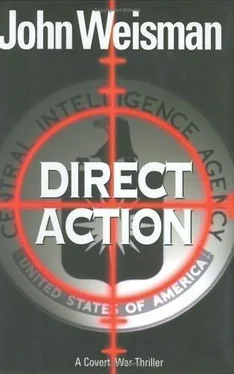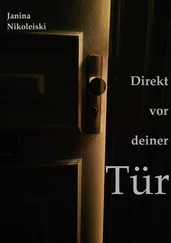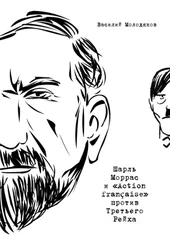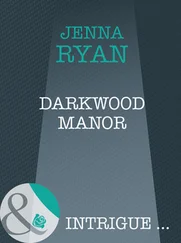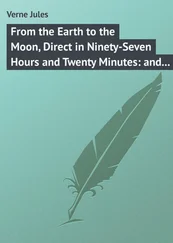Shahristani balanced his cigarette on the rim of the ashtray. He took an elegant, gold-cornered Asprey pocket secretary from his jacket pocket and extracted a three-by-five photograph from it.
“This,” he said. “This is proof.” He slid the photograph across the table.
Tom pulled a pair of reading glasses from his breast pocket and slipped them on. He looked down at what appeared to be a surveillance photo. In the foreground was the blurred hood of a car. Behind the vehicle, two men were walking past a café or bistro with sidewalk tables. One man was slightly in front of the other. Tom looked up, puzzled. “Here.” Shahristani handed him a pocket magnifier.
Tom shifted his wine out of the way, laid the photo on the tablecloth, and squinted into the thick glass, playing it back and forth over the photo. Behind the two figures, he saw an awning with writing on it. Squinting, Tom played with the magnifier. “L’Étrier?”
“Justement.”
“Is this Paris?”
“Yes.” Shahristani drew deeply on his cigarette and nodded. “Rue Lambert in Montmartre.”
“Who’s the mark?”
“There are two of them. Don’t you know?”
Tom shrugged. “Never seen either one before.”
“Yes, you have-one of them you know.”
Tom pulled the reading glasses off and looked skeptically at Shahristani. “Stop playing games, Shahram.”
“They are coming from a meeting at a safe house next door to the bistro.” The Iranian stabbed the Dunhill out, leaned over, cupped his hand across the side of his face so what he said couldn’t be lip-read from across the room. “I believe the man in front to be a mercenary currently working for al-Qa’ida. He was born a Moroccan, of that much I am reasonably certain, although one of his two or three current passports is French, and was issued in the name of Tariq Ben Said, born Tunis, August of 1958.”
“Tariq Ben Said.”
“Yes, so let’s call him that. What his real name is, who can tell. When he was first brought to my attention about three years ago, he was working freelance.”
“By whom?”
“By whom?”
“Who brought him to your attention?”
Shahristani deflected Tom’s query. “He is a killer by trade. His instrument of choice is plastique explosive. Clandestine bombs, although I believe the current fashionable term is IED, for improvised explosive device.”
“An IED maker?”
“There is nothing improvised about his bombs, Thomas. He is said to have used case studies.”
Tom shrugged. “Such as?”
“It sounds perverse, but he bases much of his technique on what the Israelis pioneered.”
“Really?”
“Yes. When you look at it coldly, Tom, the Israeli secret services perfected most of the techniques currently used by terrorists. Remotely detonated devices? That’s how Mossad got Ali Hassan Salameh, the operations chief of Black September and architect of the 1972 Munich Olympics massacre. Remember? In 1979, Mossad remotely exploded a Volkswagen as Salameh’s car passed by on rue Madame Curie in Beirut.” Shahram’s eyes flicked toward the ceiling. “As I recall, the operation was run by a woman-something something Chambers.” 11
He returned his gaze to Tom. “Exploding cell phones-they pioneered that technique, too, and put it to good use in counterterror operations on the West Bank and even in Europe. Czech plastique-Semtex-molded into everyday items? That tactic, too, was enhanced by Mossad. And now-”
“Shahram,” Tom interrupted. “Ben Said- please .”
“He is more than a bomb maker, Tom. He is an assassin. Others use a knife or a gun. He uses plastic explosive. He has killed hundreds-hundreds. He is a chameleon. His tactics are fluid; he changes his appearance regularly. He has had plastic surgery half a dozen times. He uses”-the Iranian paused as he searched for the right word-“ des prosthétiques -devices to change his appearance.”
“And now?”
“And now he has allied himself with al-Qa’ida.” The Iranian set his water glass down. “For money, of course. Tens of millions of Euros. I have been reliably told that the bomber Ben Said was recently seen in the company of this man.” The Iranian produced a second photograph and slid it across the table. “Yahia Hamzi. Based in Paris. He imports Moroccan wine-a company with the unlikely name Boissons Maghreb, with a small warehouse near the rue du Congo near the Pantin industrial zone. Hamzi himself is secular, not religious at all. But he is very active in civic affairs out beyond the nineteenth.”
Tom examined the photo, which had obviously been duplicated from a passport because a portion of an official seal was visible in the bottom right-hand corner. The clean-shaven man had sharp Arabic features and curly hair-what might almost be described as an Afro. He wore the sort of thick-framed eyeglasses favored by old-fashioned Parisians.
“Hamzi.” Tom looked up from the photo. “The nineteenth, you say?”
“Affirmative.”
It made sense. The nineteenth arrondissement was out near Aubervilliers and Pantin, where there were huge apartment blocks of suburban slums known as banlieues, as bad as the worst Chicago, Washington, D.C., or Los Angeles had to offer-filled with North African immigrants. And gangs. Drugs were rampant, killings commonplace. The north end of the nineteenth was a hotbed of Islamist activity. “What’s the Iranian angle?”
“Hamzi uses the importing business to launder money for a Salafiya splinter group known as the CIM, for Combatants Islamiques Marocains.”
Tom took a sip of his wine. “Don’t know of them.”
“No one knows of them. The reason is because CIM does not exist. It is a cover name, created by Seppah to throw hunters like you and me off the scent. Just the way Seppah created the Islamic Jihad Organization in Lebanon during the 1980s to fool Western intelligence. CIA treated the IJO as an Iranian-sponsored organization. It wasn’t. IJO wasn’t Iranian-sponsored; it was a creation entirely molded by Tehran. By the Seppah.”
The Seppah again. Tom frowned. Shahristani wasn’t making sense. “CIM is a Seppah creation?”
“That is my guess. And therefore Hamzi is a Seppah agent. I believe he is also what you might call Ben Said’s banker.”
“Might call?”
In response, Shahristani shrugged. Tom decided to take another tack. “You just said Ben Said is al-Qa’ida’s man.”
“By his own choice. He also takes contracts from Tehran.” Shahristani made a face. “You should have dealt with them years ago.”
“You have no argument from me about that.”
The Iranian nodded. “It appears to me,” he said, “that much of the original structure of al-Qa’ida is fractured. Degraded. Dispersed.”
Tom had no idea where Shahram was going. But he played along. “Agreed.”
“So what do they do? They adapt. They improvise. They metamorphose. They transmogrify.”
“You mean they change identity?”
“No, Thomas. I mean that like a pilot fish on a shark, al-Qa’ida attaches itself to an existing organization, uses it for a while, and then moves on. I believe Ben Said, whose real name could be anything, is also a pilot fish. Now he has attached himself to both al-Qa’ida and the Seppah.”
“Do the French know about Ben Said?”
“No. They keep an eye on Hamzi from time to time-they think he may be engaged in smuggling. But the name Ben Said is unknown to all of Western intelligence.”
Tom’s right index finger pulled at the skin below his right eye, indicating that he was dubious.
Shahristani continued unfazed. “Ask the Israelis. They know there is a bomber out there with a unique talent. They just have no idea who he is.”
Читать дальше
